
Willy Birgel, born Wilhelm Maria Birgel, was a German theatre and film actor.
Der Fall Deruga is a novel by Ricarda Huch first published in German in 1917 about a physician charged with killing his ex-wife. An early courtroom drama, it depicts a trial by jury in which the defendant is reluctant, if not unwilling, to talk about the crime he has allegedly committed. In 1938 the novel was turned into a film of the same title.
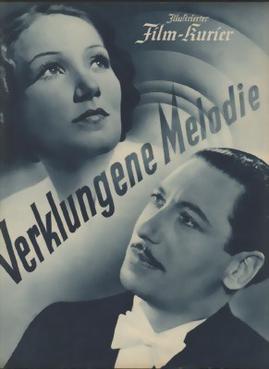
Faded Melody is a 1938 German drama film directed by Viktor Tourjansky and starring Brigitte Horney, Willy Birgel and Carl Raddatz. The film was made by Germany's largest studio of the era UFA. It was shot at the Babelsberg Studios in Potsdam and on location in French Algeria, New York City and Berlin. The film's sets were designed by the art directors Hermann Asmus and Max Mellin. It premiered at Berlin's Gloria-Palast.

By a Silken Thread is a 1938 German drama film directed by Robert A. Stemmle and starring Willy Fritsch, Carl Kuhlmann and Käthe von Nagy. The film was intended to be an exposure of "crooked Jewish capitalists" in line with Nazi racial policy of the era. It was shot at the Babelsberg Studios of UFA in Potsdam. The film's sets were designed by the art director Otto Hunte.

Sergeant Schwenke is a 1935 German crime drama film directed by Carl Froelich and starring Gustav Fröhlich, Marianne Hoppe and Karl Dannemann. It was made at the former National Studios in Berlin's Tempelhof area which were now controlled by Froelich. The film's sets were designed by the art directors Franz Schroedter and Walter Haag. It is based on a novel of the same title by Hans Joachim Freiherr von Reizenstein. It was remade in 1955 as Sergeant Borck..
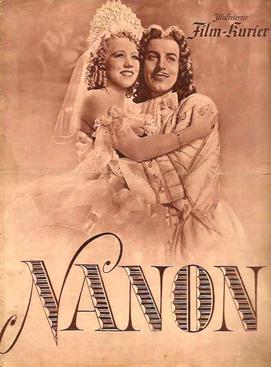
Nanon is a 1938 German historical film directed by Herbert Maisch and starring Erna Sack, Johannes Heesters and Dagny Servaes. It is based on the original operetta Nanon by Richard Genée which had a libretto by F Zell, although the music for this film was specially commissioned from Alois Melichar.
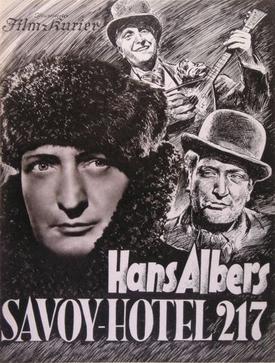
Savoy Hotel 217 is a 1936 German mystery drama film directed by Gustav Ucicky and starring Hans Albers, Brigitte Horney and Alexander Engel. It was shot at the Babelsberg Studios in Potsdam. The film's sets were designed by the art directors Robert Herlth and Walter Röhrig. The costumes were by Herbert Ploberger. It premiered at Berlin's UFA-Palast am Zoo.
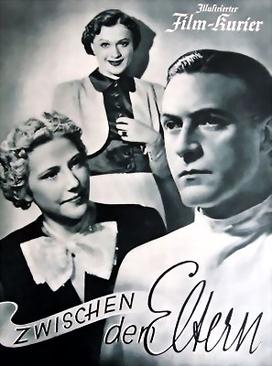
Between the Parents is a 1938 German drama film directed by Hans Hinrich and starring Willy Fritsch, Jutta Freybe, and Gusti Huber. It was shot at the Babelsberg Studios in Potsdam. The film's sets were designed by the art directors Wilhelm Depenau and Ludwig Reiber.

The Chaplain of San Lorenzo is a 1953 West German drama film directed by Gustav Ucicky and starring Willy Birgel, Dieter Borsche and Gertrud Kückelmann. It was shot at the Bavaria Studios in Munich. The film's sets were designed by the art directors Robert Herlth and Gottfried Will.
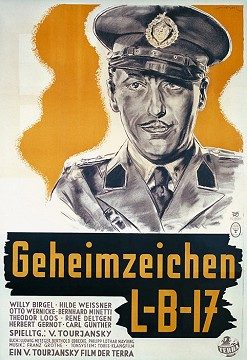
Secret Code LB 17 is a 1938 German thriller film directed by Victor Tourjansky and starring Willy Birgel, Hilde Weissner and Bernhard Minetti. It was made at the Babelsberg Studios outside Berlin. The film's sets were designed by the art directors Karl Böhm and Erich Czerwonski.

Men Are That Way is a 1939 German drama film directed by Arthur Maria Rabenalt and starring Hertha Feiler, Hans Söhnker and Hans Olden. The film's sets were designed by the art director Willi Herrmann. It was remade by Rabenalt in Austria as Arena of Fear (1959).

Twelve Minutes After Midnight is a 1939 German comedy crime film directed by Johannes Guter and starring Geraldine Katt, Ursula Herking and René Deltgen.
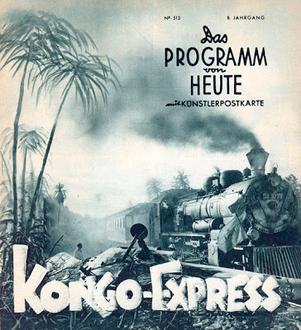
Congo Express is a 1939 German adventure film directed by Eduard von Borsody and starring Marianne Hoppe, Willy Birgel. and René Deltgen.

My Daughter Doesn't Do That is a 1940 German romantic comedy film directed by Hans H. Zerlett and starring Ralph Arthur Roberts, Erika von Thellmann, and Geraldine Katt.

Counterfeiters is a 1940 German crime film directed by Hermann Pfeiffer and starring Kirsten Heiberg, Rudolf Fernau and Karin Himboldt.

In the Name of the People is a 1939 German crime film directed by Erich Engels and starring Rudolf Fernau, Fritz Kampers, and Rolf Weih. The film's sets were designed by the art directors Hans Sohnle and Wilhelm Vorwerg. It was shot at the Babelsberg Studios in Berlin.

The Governor is a 1939 German drama film directed by Viktor Tourjansky and starring Brigitte Horney, Willy Birgel and Hannelore Schroth. It is based on the play Die Fahne by Emmerich Groh. It was shot at the Babelsberg and Tempelhof Studios in Berlin and on location in East Prussia. The film's sets were designed by the art director Max Mellin. It was produced on a budget of 715,000 Reichsmarks.
















